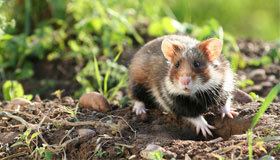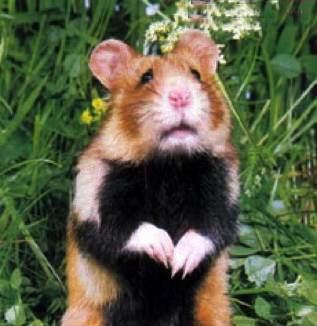Subfamily Cricetinae Scientific name Cricetus cricetus Rank Species | Phylum Chordata Genus CricetusLeske, 1779 Higher classification Cricetus | |
 | ||
Similar Hamster, Rodent, Djungarian hamster, Golden hamster, Mesocricetus | ||
European hamster curiosity
The European hamster, (Cricetus cricetus), also known as the Eurasian hamster, black-bellied hamster or common hamster, is the only species of the genus Cricetus. It is native to a large range in Eurasia, extending from Belgium to the Altai mountains and Yenisey River in Russia. Where abundant the animal is widely considered a farmland pest, and it has also been trapped for its fur. Across its global range, it is considered of least concern, but in many individual Western European countries it is considered critically endangered.
Contents
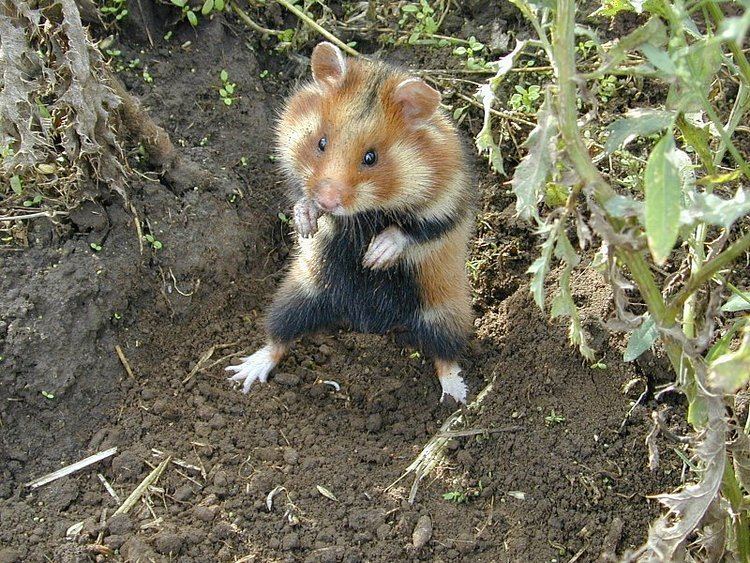
Description
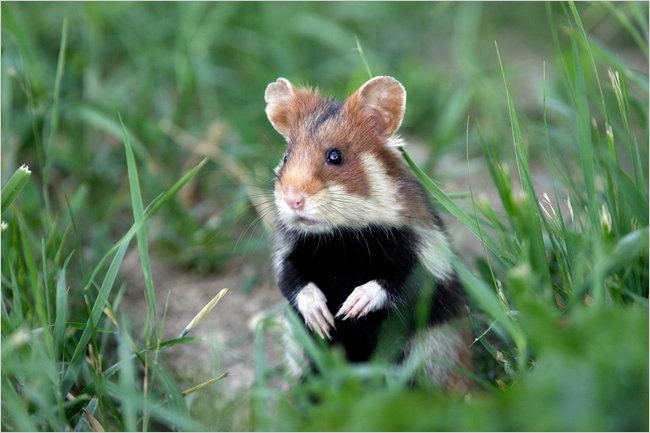
The European hamster has brown dorsal fur with white patches. The chest and belly are black. The tail is short and furred. It is much larger than the Syrian or dwarf hamsters, which are commonly kept as pets. It weighs 220–460 g (7.8–16.2 oz) and can grow to 20–35 cm (8–14 in) long with a tail of 40–60 mm (1.6–2.4 in). Its dental formula is 1/1, 0/0, 0/0, 3/3.
Behaviour
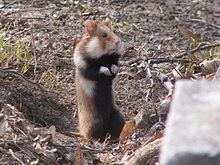
The common hamster is a nocturnal or crepuscular species. It lives in a complex burrow system. It eats seeds, legumes, root vegetables, grasses and insects. It transports its food in its elastic cheek pouches to the food storage chambers. These may be quite large and may consist of a total of 65kg of food including 5kg of potatoes and 15kg of grain It hibernates between October and March. During this time, it wakes every five to seven days to feed from the storage chambers. The adults reach sexual maturity when they are about 43 days old and breed from early April to August. The gestation period is 18–20 days and the size of the litter ranges from three to 15 young, which are weaned when aged three weeks. They are usually solitary animals.
Distribution

It is typically found in low-lying farmland with soft loam or loess soils, although it may also inhabit meadows, gardens or hedges. It is found from Belgium and Alsace in the west, to Russia in the east, and Bulgaria in the south.
In captivity, the European hamster has an unusually long lifespan, living up to eight years.
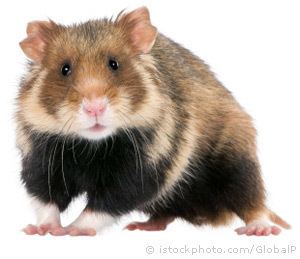
The Court of Justice in Luxembourg, the European Union's highest court, ruled on 9 June 2011 that France had failed to protect the European hamster. The court said that if France did not adjust its agricultural and urbanization policies sufficiently to protect it, the government would be subject to fines of up to $24.6 million.
